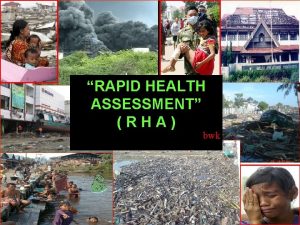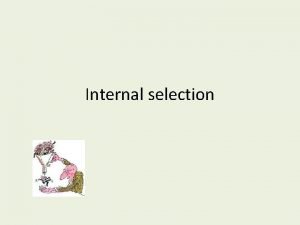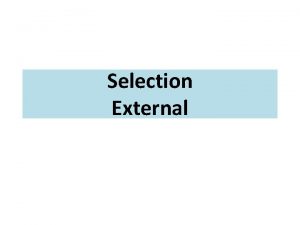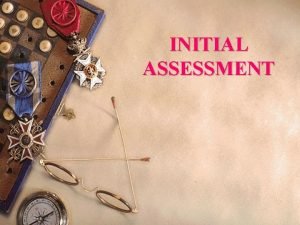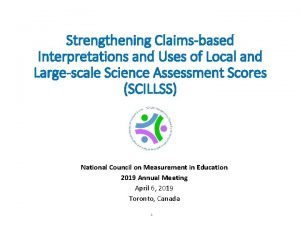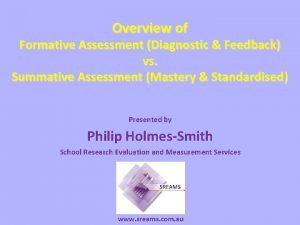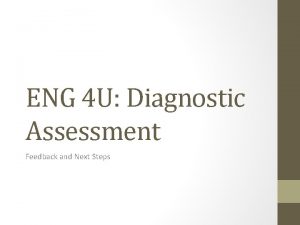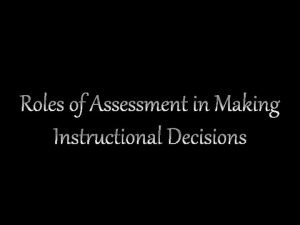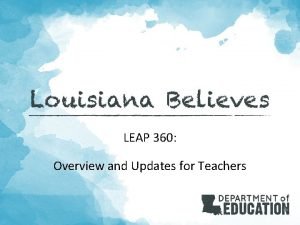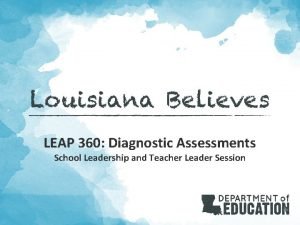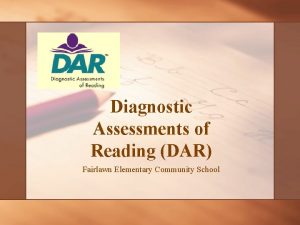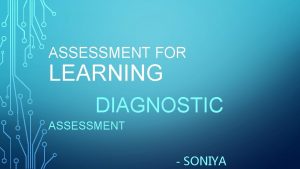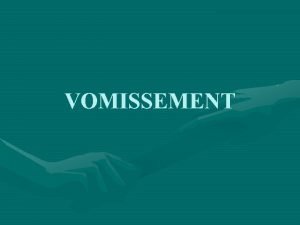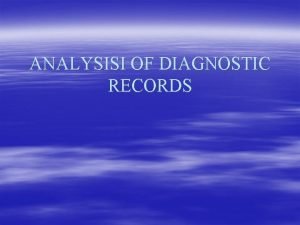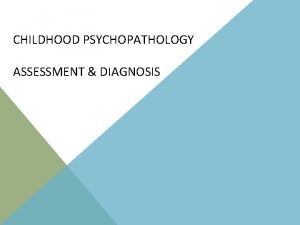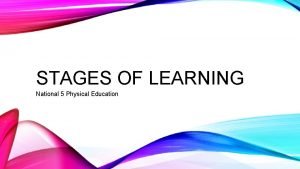stages of assessment Initial assessment Diagnostic assessment for











- Slides: 11

stages of assessment Initial assessment Diagnostic assessment (for Sf. L courses) Formative assessment Summative assessment

Initial assessment A skills check which will establish levels of current skills and areas for further development. Initial assessment will inform starting point base line for the learner Mini-test or self assessmnet could inform this stage.

Diagnostic assessment (Sf. L) Diagnostic assessment could take place over several sessions and will give a detailed learner profile to inform the ILP Diagnostic assessments are available in paper based and online format. Practice tests could also be used to inform this stage.

Formative assessment The purpose of formative assessment is to review learner progress to inform further learning and readiness for summative assessment. This can be formal or informal and will link to learning outcomes for the course. Practice tests, written questions, tasks and production of evidence will inform this stage.

Summative assessment Learners complete an assessment which marks the end of a period of learning where goals from the ILP are checked as being met. This is often a standardised assessment designed to meet the criteria of the examination board. Sf. L Learners would take the National Test in literacy and/or numeracy.

RARPA has an important part to play in the delivery of the Skills Strategy • • • Recognising And Recording Progress Achievement

The RARPA approach is a flexible learner-centred approach which enables learners to take charge of their learning

RARPA raises learners’ awareness of the learning process, builds their confidence and encourages enthusiasm by using a more engaging manner of reaching personal goals.

RARPA is good educational practice The five elements of the staged process are mapped to the key questions of the Common Inspection Framework (CIF).

These five elements are: • Course aims that are clearly stated. • Initial assessment of learners’ starting points and needs. • Discussion and negotiation to identify appropriately challenging objectives. • Formative assessment, checking on progress, making records and giving feedback. • Final recognition of progress, recording and celebration of achievement

RARPA can contribute to positive attitudes to Lifelong learning • RARPA will draw the attention of learners to progression courses • The key document is the Individual Learner Plan ILP • The ILP should be used as a working document to record the 5 stages above.
 Rapid health assessment form
Rapid health assessment form Internal selection
Internal selection Initial assessment methods for hiring
Initial assessment methods for hiring Makalah initial assessment
Makalah initial assessment Formative assessment
Formative assessment Assessment formative summative diagnostic
Assessment formative summative diagnostic Grammar feedback examples
Grammar feedback examples Formative placement diagnostic and summative evaluation
Formative placement diagnostic and summative evaluation Leap 360 geometry interim test form 3 answer key
Leap 360 geometry interim test form 3 answer key Leap 360 interim
Leap 360 interim Dar reading assessment
Dar reading assessment Kontinuitetshantering i praktiken
Kontinuitetshantering i praktiken
